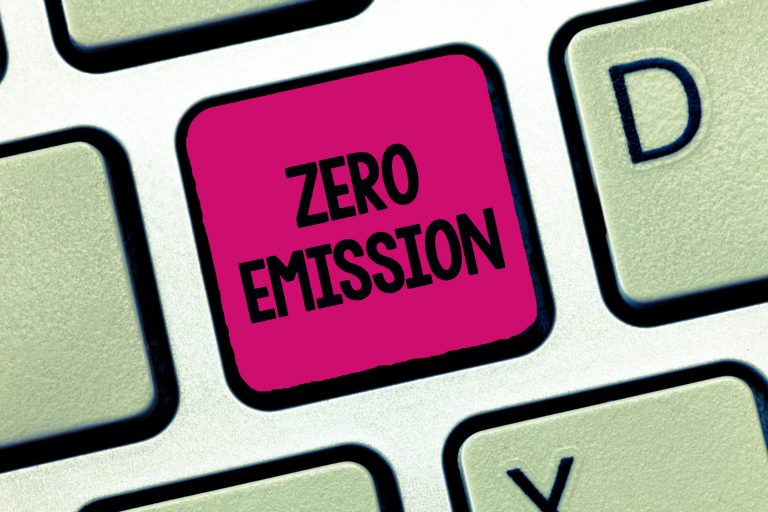Governments of the three countries, together with the Global Maritime Forum and the Mærsk Mc-Kinney Møller Center for Zero Carbon Shipping, will spearhead initiatives decarbonizing the entire maritime value chain.
Carrying between 80-90% of global trade in a less carbon-intensive manner than other freight transport modes, international maritime shipping nonetheless represents about 2–3% of the world’s total annual greenhouse gas emissions. Without immediate and concerted efforts, emissions from the sector could increase between 50% and 250% by 2050.
The governments of Denmark, Norway, and the United States, along with the Global Maritime Forum and the Mærsk Mc-Kinney Møller Center for Zero Carbon Shipping, today announced that they will lead a new Zero-Emission Shipping Mission as part of Mission Innovation. The Mission aims to accelerate international public-private collaboration to scale and deploy new green maritime solutions, setting international shipping on an ambitious zero-emission course. The Mission will also be supported by the governments of India, Morocco, the U.K., Singapore, France, Ghana, and South Korea.
“In Denmark, we believe a greener future is possible – if we work together. As one of the world’s largest maritime nations, Denmark has initiated the Zero-Emission Shipping Mission, with great partners from the public and the private sector from all over the world. Our common goal is to make zero-emission vessels the natural choice for ship owners when they renew their fleet,” said Simon Kollerup, Danish Minister for Industry, Business, and Financial Affairs.
“The decarbonization of shipping will result in a growing global demand for climate technology in the years ahead. Norway’s and other countries leading position in green shipping can become an important competitive advantage, giving the maritime industry huge growth potential in international markets,” said Sveinung Rotevatn, Norwegian Minister for Climate and Environment.
“Through fearless technological innovation, ambitious clean energy deployment, and constructive international collaboration, we can build a net-zero carbon economy that creates millions of jobs and lifts our citizens into greater prosperity,” said Jennifer Granholm, U.S. Secretary of Energy.
The three main goals of the Zero-Emission Shipping Mission are:
Develop, demonstrate, and deploy zero-emission fuels, ships, and fuel infrastructure in a coordinated fashion along the full value chain.
By 2030, ships capable of running on hydrogen-based zero-emission fuels—such as green hydrogen, green ammonia, green methanol, and advanced biofuels—make up at least 5% of the global deep-sea fleet measured by fuel consumption.
By 2030, at least 200 of these well-to-wake zero-emission fueled ships are in service and utilizing these fuels across their main deep sea shipping routes.
“Shipping is on the verge of a clean energy revolution. To set the global maritime industry on a climate-aligned course and meet the goals of the Paris Agreement, zero-emission vessels need to be the dominant and competitive choice by the end of this decade. The Zero-Emission Shipping Mission will accelerate public and private efforts around the world to make a zero-emission fleet a reality by 2030,” said Johannah Christensen, Managing Director of the Global Maritime Forum.
“The shipping industry needs to decarbonize to be part of the solution to the climate crisis. It will not be easy, and we don’t have a lot of time, but it is possible and now is the time to act. The Mærsk Mc-Kinney Møller Center for Zero Carbon Shipping is all about accelerating the transition by finding solutions through collaboration with partners across the ecosystem. With our partners we are proud and excited to co-lead this very important Zero Emission Shipping Mission,” said Bo Cerup-Simonsen, Chief Executive Officer of the Mærsk Mc-Kinney Møller Center for Zero Carbon Shipping.
The Zero-Emission Shipping Mission is part of Mission Innovation, a global initiative of 22 countries and the European Commission which aims to catalyze action and spearhead a decade of innovation to drive global investment in clean energy research, development, and demonstrations. The goal is to make clean energy affordable, attractive, and accessible for all this decade, to accelerate action towards the Paris Agreement and net zero pathways. Mission Innovation was announced at COP21 on November 30, 2015, as world leaders came together in Paris to commit to ambitious efforts to combat climate change. The second phase of Mission Innovation (MI 2.0) is launched at the Innovating to Net Zero Summit in Chile on 2nd June 2021.
Source: Hellenic Shipping






